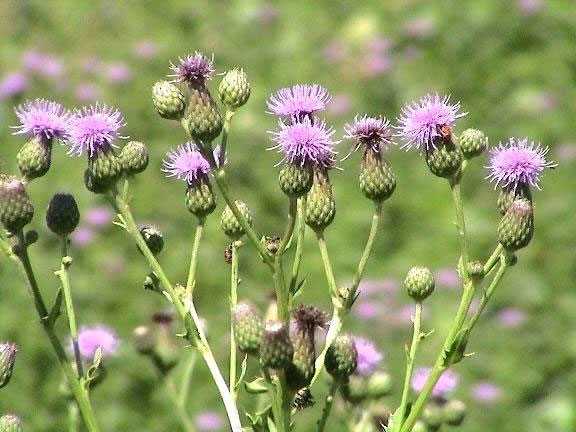Detecting dangerous grass in wheat imported into Vietnam
The next grass is mixed in 1.6 million tons of wheat, if it spreads to the field, it can eat out the nutrition, reducing the yield of 25-75% of the crop.
The Plant Protection Department and the Ministry of Agriculture and Rural Development have sent letters to enterprises requesting that from November 1, enterprises that have imported wheat shipments are tested to be infected with Cirsium Arvense grass (name Vietnamese as a successor grass plant) will have to be re-exported.
The move came after the quarantine agency discovered 1.6 million tons of imported wheat and copper grass among nearly 4 million tons of wheat imported into Vietnam since the beginning of the year.
Talking to the PV, Mr. Hoang Trung, Director of Plant Protection, said that copper thistle is a very dangerous alien plant. This tree is currently a plant quarantine object of more than 40 countries, including Vietnam due to the risk of nutritional competition with agricultural crops.
"If more than one square meter of plants has 20-30 acres will reduce the yield of that crop by 25-75%," Trung said, saying that the plant is capable of spreading very quickly. A copper thistle has about 5,000 seeds, so it is dangerous for a single seedling crop to grow in Vietnam. Seeds of plants that survive in water for 20 years can still germinate.

Brass grass.(Photo: Invasive.org).
Mr. Trung also said that if countries importing Vietnam's agricultural goods know that copper grasses appear in growing areas, agricultural products such as rice will be affected.
Previously, the Plant Protection Department has applied surveillance measures from wharves to warehouses and finished products for wheat importers. The Department has also warned businesses to actively import goods from countries without this weed infection.
"According to international practices and Vietnamese regulations, the Department must apply stronger measures to require re-export of these shipments to prevent and protect domestic production and export goods to countries." Mr. Trung said that this tree has not been discovered in Vietnam's field.
Studies around the world have proven that up to 27 types of crops are nutritionally competitive by copper thistle. In countries such as the US, Canada, South Korea, India, Australia, Brazil . this grass is classified in a dangerous and banned plant group.
Vietnam used to spend a lot of money and manpower to deal with exotic plants like marshland or mulberry. Measures such as chopping, burning, and spraying herbicides are not nearly as effective because their common point is their ability to grow quickly, grow strongly after being cut or burned.
Their seeds can survive, long-term germination and spread through many forms: floating by the river, flood water, sticking to people's clothes, into the fur of animals, burrowing into the river bank sand and from there, it is transported to many areas when exploiting sand for the project.
- US science successfully decodes the genome of wheat
- Detecting E.coli in avocado imported from Spain
- Successful breeding of wheat tolerates salinity
- Shocked before mantis scene
- Romantic rose grass hill in Da Lat
- The first successful decoding of the wheat genome structure
- The grass may be the noodle Thach Sanh that absorbs CO2
- Sweet wheat was born
- Will salty wheat solve the food crisis?
- Create drought-resistant, high-yield wheat varieties
- Anti-flood grass was born
- Wheat is aging prematurely because of climate change
 Why do potatoes have eyes?
Why do potatoes have eyes? 'Tragedy' the world's largest carnivorous life: Death becomes ... public toilet
'Tragedy' the world's largest carnivorous life: Death becomes ... public toilet Tomatoes were once considered 'poisonous' for 200 years
Tomatoes were once considered 'poisonous' for 200 years Detecting microscopic parasites on human face
Detecting microscopic parasites on human face